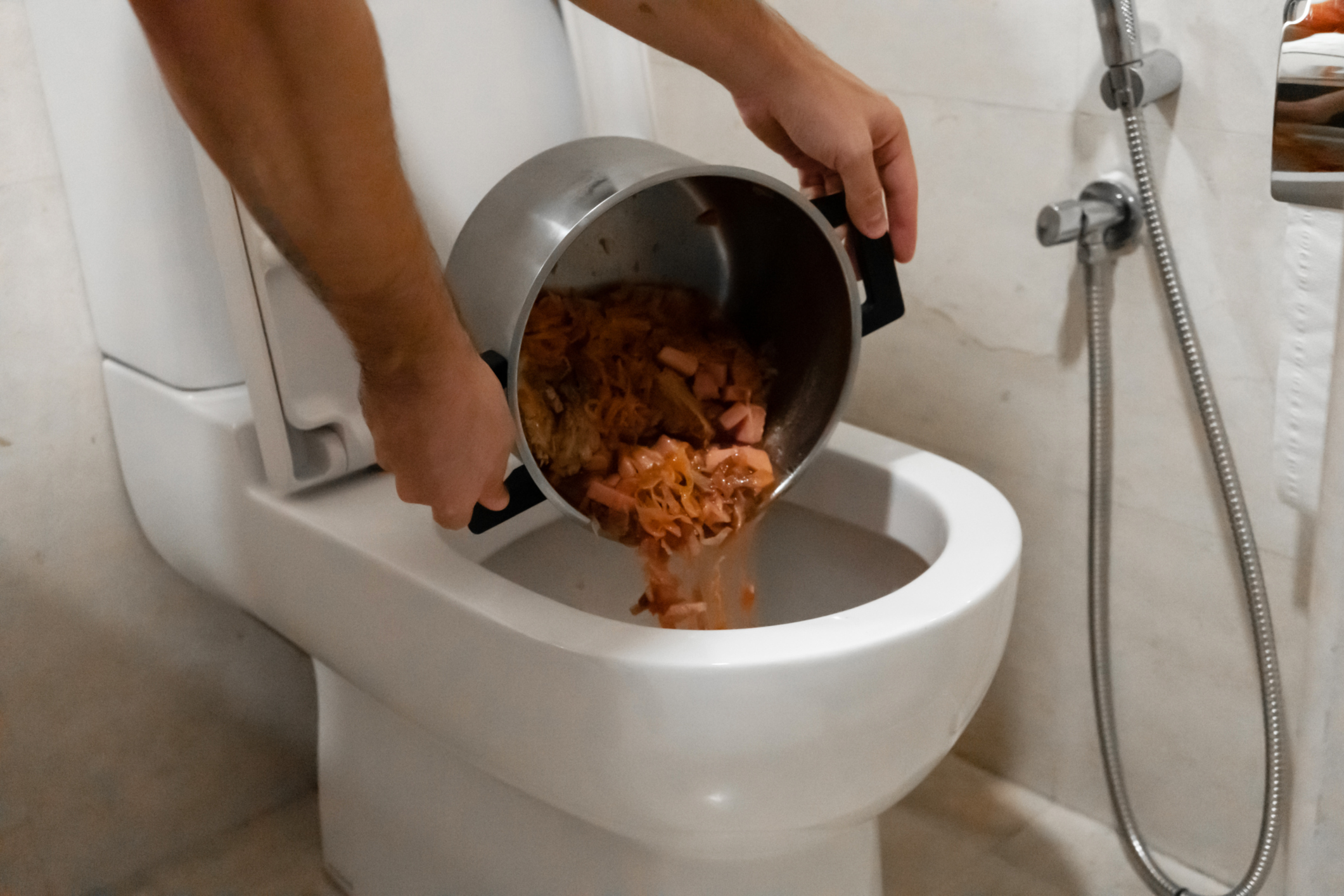We've discovered this great article about Think Twice Before Flushing Food Down Your Toilet directly below on the net and decided it made good sense to quickly share it with you on my blog.

Introduction
Many people are frequently confronted with the predicament of what to do with food waste, especially when it involves leftovers or scraps. One common question that emerges is whether it's fine to flush food down the commode. In this post, we'll delve into the reasons that individuals might take into consideration flushing food, the effects of doing so, and alternative approaches for proper disposal.
Reasons individuals might take into consideration flushing food
Lack of awareness
Some individuals might not be aware of the prospective damage brought on by flushing food down the toilet. They may erroneously think that it's a safe practice.
Ease
Purging food down the commode might seem like a quick and easy service to throwing away undesirable scraps, specifically when there's no neighboring garbage can offered.
Negligence
Sometimes, people may simply pick to flush food out of large negligence, without thinking about the repercussions of their actions.
Effects of flushing food down the bathroom
Environmental influence
Food waste that ends up in waterways can contribute to air pollution and harm marine ecological communities. Furthermore, the water made use of to flush food can stress water resources.
Pipes issues
Purging food can cause clogged pipelines and drains pipes, causing pricey pipes repair work and aggravations.
Kinds of food that ought to not be purged
Fibrous foods
Foods with fibrous textures such as celery or corn husks can obtain tangled in pipes and trigger obstructions.
Starchy foods
Starchy foods like pasta and rice can soak up water and swell, causing clogs in pipelines.
Oils and fats
Greasy foods like bacon or cooking oils ought to never be flushed down the bathroom as they can solidify and cause blockages.
Proper disposal methods for food waste
Using a garbage disposal
For homes equipped with garbage disposals, food scraps can be ground up and purged via the pipes system. Nevertheless, not all foods are suitable for disposal in this manner.
Recycling
Particular food packaging products can be recycled, reducing waste and decreasing ecological impact.
Composting
Composting is an environmentally friendly means to take care of food waste. Organic products can be composted and used to enhance soil for horticulture.
The value of correct waste administration
Lowering environmental injury
Proper waste administration techniques, such as composting and recycling, help lessen air pollution and preserve natural deposits for future generations.
Safeguarding plumbing systems
By preventing the technique of flushing food down the commode, property owners can stop pricey pipes repair work and keep the integrity of their pipes systems.
Conclusion
To conclude, while it might be alluring to flush food down the bathroom for ease, it is essential to recognize the possible consequences of this action. By embracing appropriate waste monitoring techniques and taking care of food waste responsibly, individuals can contribute to healthier plumbing systems and a cleaner environment for all.
FLUSH FOOD DOWN THE TOILET?
FLUSHING FOOD CAN CAUSE BLOCKED DRAINS IN YOUR HOME
All of the plumbing fixtures in your home are connected to the same sewer pipe outside of your home. This outdoor sewer pipe is responsible for transporting all the wastewater from your home to the Council sewer mains. Even small pieces of food that go down the kitchen sink can cause problems for your sewer. It should therefore be obvious that flushing larger bits of food, such as meat, risks a clog in either the toilet itself or the sewer pipes. Flushing greasy food is even more problematic because oil coagulates when it cools, coating the interior lining of your pipes.
THE TOILET IS NOT A BIN
Food isn’t the only thing that people shouldn’t be flushing down the toilet. People use the toilet to dispose of all kinds of things such as tampons, makeup wipes, dental floss, kitty litter and even underwear. Water goes to great lengths to educate residents about the high costs and stress placed on wastewater treatment systems simply from people flushing the wrong stuff down the toilet. It costs taxpayers millions of dollars each year, and homeowners thousands in blocked drain repairs.
FLUSHING FOOD IS A WASTE OF WATER
Flushing food is a waste of our most precious resource - water. In June this year Level 1 water restrictions were introduced to protect water supply from drought conditions. Much of New South Wales continues to be affected by prolonged drought with recent figures revealing up to 97 per cent of the state remains in drought. Depending on whether you have a single or dual flush toilet, every single flush uses between five and 11 litres of water. In the current climate this is a huge amount of water to be wasting on flushing food that should be placed in the bin (or better yet, the compost).
https://www.jabplumbingsolutions.com.au/blog/can-you-flush-food-down-the-toilet

Hopefully you liked our excerpt about What Can Happen If You Flush Food Down the Toilet?. Thanks a ton for finding the time to read through our piece of content. Loved our posting? Please share it. Help someone else find it. Thanks for going through it.
Click Here